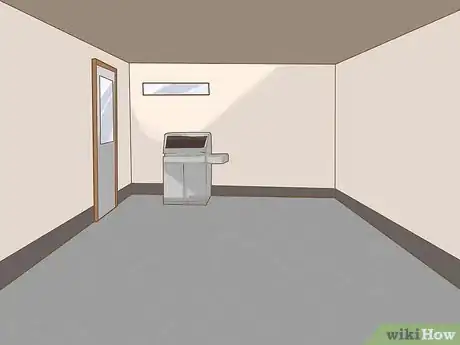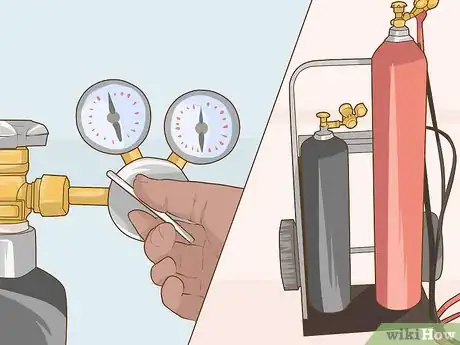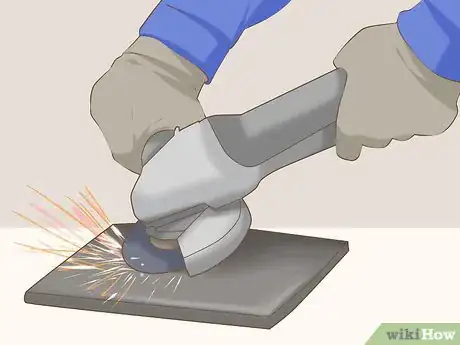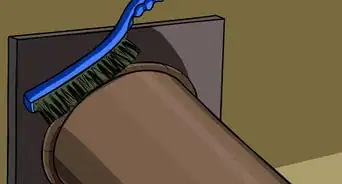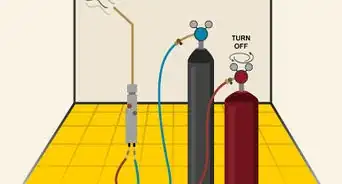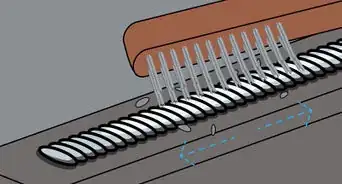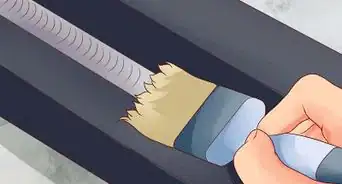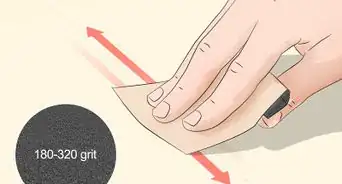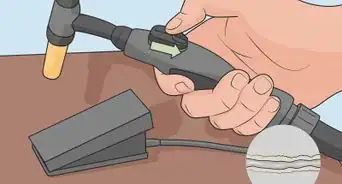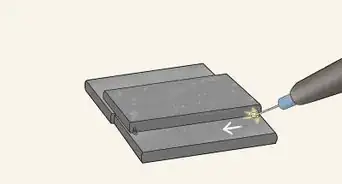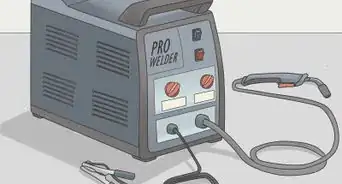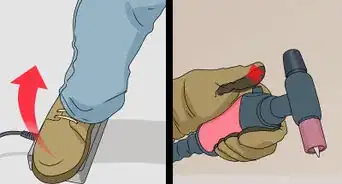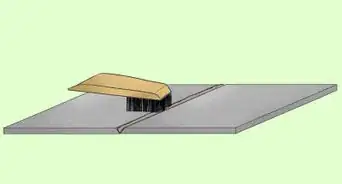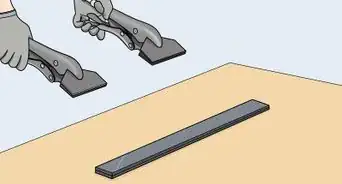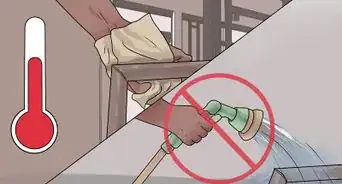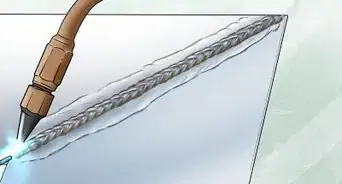wikiHow is a “wiki,” similar to Wikipedia, which means that many of our articles are co-written by multiple authors. To create this article, 14 people, some anonymous, worked to edit and improve it over time.
This article has been viewed 68,821 times.
Learn more...
Learning the basics of torch welding is the first step in becoming proficient with many types of welding. However, mastering welding is something that can take time, not necessarily due to its difficulty, but because there are many subtleties involved with maneuvering the torch. There are many types of materials that can be welded, and each has its own unique properties. Once you've mastered the oxygen flow and tip size on a torch, you will be ready to practice handling the torch and apply the process to a variety of projects. Use these tips to learn how to torch weld.
Steps
Light the Torch
-
1Put on protective clothing, including long pants and shirt, welder's gloves and eye protection.[1]
-
2Work in an open space free of any flammable materials.[2]Advertisement
-
3Turn on the fuel adjustment knob. The knob is located on the shorter of the 2 tanks on the torch. Turn the knob slowly, about 1/2 inch (1.3 cm), to release the gas.
-
4Light the torch. Tilt the lighter so that the fuel is trapped in the spark cup and slowly light the torch.[3]
-
5Adjust the flame size. Carefully open the oxygen valve a little bit at a time until you have the size flame you require. A steady flame will have well defined blue edges.[4]
Use the Torch
-
1Clean the material to be welded. Check the material you are welding for rust or any other debris. Clean the material until it is smooth and free of dirt or debris.
-
2Apply the flame to your weld. Adjust your flame, and begin to carefully move the torch over the area to be welded. Move at an even pace in order to see your results. If you hold the flame too closely to the material for too long a period, you will create holes in the material. Not enough application will result in the piece not melting.[5]
- Move your torch in short runs so that you are certain you are getting the result you need. Pay attention to the angle of the torch and the amount of flame, and adjust accordingly.
Community Q&A
-
QuestionWhen using a torch to weld, what kind of rods are used to connect two pieces of metal?
 Community AnswerFor welding, you use the same metal as the filler that you are welding. For example, mild steel rod to weld mild steel. Using dissimilar metals is brazing or soldering.
Community AnswerFor welding, you use the same metal as the filler that you are welding. For example, mild steel rod to weld mild steel. Using dissimilar metals is brazing or soldering. -
QuestionCan I use a common propane torch to weld mild steel and metals such as an exhaust pipe?
 Community AnswerIt should be OK depending on the thickness of the metal; in most cases, yes.
Community AnswerIt should be OK depending on the thickness of the metal; in most cases, yes. -
QuestionWhen welding stainless steel, can I use a different material?
 Community AnswerYes, but the effect and strength is undesirable; the steel would not heat up at the same temperatures, causing insufficient fusion of the metals.
Community AnswerYes, but the effect and strength is undesirable; the steel would not heat up at the same temperatures, causing insufficient fusion of the metals.
Warnings
- In addition to the flame from a torch, sparks will be thrown throughout the welding process, creating a fire hazard. Work in an open area and keep a fire extinguisher accessible at all times. If you are working outdoors, wet down nearby grass or brush.⧼thumbs_response⧽
- Only use a spark lighter to light your torch, never a butane lighter.⧼thumbs_response⧽
Things You'll Need
- Oxyacetylene torch
- Striker (spark lighter)
- Protective clothing
- Protective eyewear

